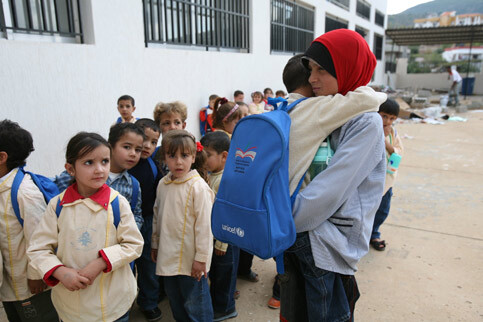IRIN 24 December 2006

There are no figures on how many children are attending school in a new village (Manoocher Deghati/IRIN)
BEIRUT (IRIN) - The lack of centralised, detailed development-related data in Lebanon has hampered the efficiency of emergency and rehabilitation efforts, humanitarian experts have said.
“Information has been poorly coordinated, and although you can access, for instance, statistics on a given town or village via the municipality, there is no central mechanism to provide a global view of the different projects going on in Lebanon at any given time,” said Rabih Bashour, coordinator for the relief and reconstruction committee at local NGO Al-Huda Society for Social Care.
As a result, Bashour said, it was difficult both at the emergency and rehabilitation stages during and after the summer war between Israel and Hezbollah, to establish a clear picture of the needs on the ground.
“When creating programmes, it usually took us a long time to determine where the greatest need was,” he said.
Other aid workers said the problem extended beyond poor coordination to a genuine gap in demographic data. For instance, the UN children’s agency UNICEF, which is funding various post-conflict psychosocial care projects, has been unable to establish how many children in the south have had to attend school in a village other than their own after schools in their area were destroyed or damaged.
“We know how many schools were damaged or destroyed, but we don’t know how many children have had to face a second post-war displacement,” said Soha Boustani, UNICEF communications officer. She said that creating suitable programmes for the needs of children had been harder to do than it could have been were the appropriate statistics gathered.
“We should be working most intensively with these children, because owing to their continued displacement they are the most vulnerable. But to this day we still neither know how many there are, or where they are now living,” said Boustani.
Joseph Courbage, a Paris-based expert demographer at the French National Institute for Demographic Studies, told IRIN that the problem is related to a deep-seated political sensitivity in Lebanon, which blocks effective, detailed data gathering.
“The current lack of accurate demographic data relates to the fact that no population census has been carried out in Lebanon since 1932,” Courbage said.
Any new statistics or findings could potentially upset the existing political structure, Courbage added, referring to the fact that positions of power are traditionally distributed along confessional lines.
“Surveys are carried out, but they rely on samples. But as demographers, economists or aid workers, we need to be able to rely on detailed information,” he said.
In 2004, the government’s Central Administration for Statistics, the Ministry of Social Affairs, and the UN Development Programme carried out a study on Lebanon in a bid to collect and provide accurate information on the social, economic, and educational make up of the country.
Entitled ‘The National Survey of Household Living Conditions’, the survey aimed to provide a platform from which the government could work to improve the living conditions of Lebanon’s poor with better planning for development.
However, during the emergency and rehabilitation phases of the summer war in Lebanon, this global outlook proved to be insufficient.
“The study went a long way towards providing information on the general make up of the country, but aid workers needed detailed facts. For example, if one were to distribute aid in a town that sustained heavy damage [during the summer war] like Bint Jbeil, one would need to know exactly what the population of the town was,” said Courbage. “It isn’t good enough to have a rough idea.”
Related Links